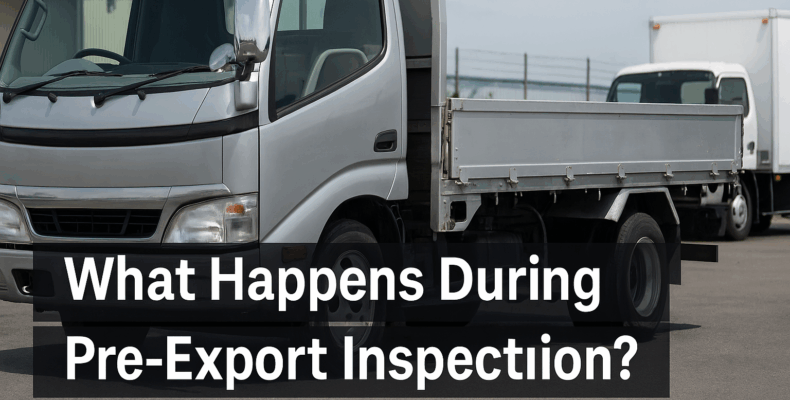What Happens During Pre-Export Inspection?
Before a Japanese used truck reaches your country, it must pass one important checkpoint: the pre-export inspection. This process ensures the truck meets the import regulations of your country, functions properly, and is ready for safe delivery. But what exactly happens during this inspection? And why does it matter?
In this article, we’ll break down the entire inspection process, explain its importance, and show you how to make sure your next truck purchase is smooth, legal, and stress-free.
Why Pre-Export Inspection Is Crucial
First and foremost, many countries require inspection certificates before allowing vehicles to enter. For example:
-
Kenya, Uganda, Tanzania, Zambia, and Jamaica require JEVIC or QISJ certification.
-
New Zealand and Australia require structural and biosecurity inspections.
-
Without inspection, your vehicle may be rejected at port or face heavy penalties.
That’s why partnering with trusted Japanese exporters is essential.
Here’s a list of the Top 5 Trusted Japanese Used Truck Exporters for Global Buyers.
Step-by-Step Breakdown of the Inspection Process
Let’s take a closer look at what actually happens before your truck is exported:
1. Booking the Inspection
Once you choose a vehicle, your exporter schedules the inspection with an approved agency. Common agencies include:
-
JEVIC (Japan Export Vehicle Inspection Center)
-
QISJ (Quality Inspection Services Japan)
-
JAAI (Japan Auto Appraisal Institute)
Inspections are conducted either at the exporter’s yard or at a certified inspection center.
2. Visual Exterior and Interior Check
Inspectors examine the truck for:
-
Scratches, dents, or rust
-
Broken lights, mirrors, or windshield cracks
-
Dashboard condition and seat belts
-
Functioning meters and warning lights
Minor cosmetic issues may pass, but major damage could lead to failure.
3. Mechanical and Electrical Testing
The truck’s engine, brakes, lights, horn, steering, and suspension are tested. Inspectors look for:
-
Oil leaks
-
Excessive engine noise
-
Warning lamps
-
Poor braking response
Everything must meet both Japanese safety standards and the import country’s requirements.
4. Emission and Odometer Verification
To prevent fraud and reduce environmental harm:
-
Odometer readings are checked for tampering
-
Exhaust emissions are tested (especially for diesel trucks)
If the vehicle exceeds limits, it may be rejected or need repairs before approval.
5. Undercarriage Inspection
This is especially important for countries with strict biosecurity rules. Inspectors ensure the undercarriage is:
-
Free from mud, plants, or insects
-
Clean and dry
New Zealand and Australia, in particular, are very strict on this point.
6. Documentation and Certification
Once the truck passes all checks:
-
A certificate is issued
-
A sticker is placed on the vehicle
-
The report is forwarded to customs or the importing authority
Your exporter will send you copies of the inspection report for your records.
What Happens If the Truck Fails?
In case of failure, you have several options:
-
Repair the issue and request a reinspection
-
Choose another truck
-
Negotiate with the exporter for a replacement or refund
Experienced exporters usually pre-check vehicles before offering them for sale, reducing this risk.
Tips for Importers: How to Avoid Delays
Here’s how you can help ensure a smooth import:
-
Work with reputable exporters who know your country’s inspection requirements
-
Double-check if your country requires pre-shipment inspection
-
Request inspection photos and documents in advance
-
Avoid last-minute purchases—some inspections take 5–7 business days
Explore the Top 5 Trusted Exporters to work with professionals who handle inspections efficiently.
Conclusion: Inspection Is Not Optional — It’s Essential
The pre-export inspection is more than a formality. It’s a legal requirement and a guarantee of quality and safety. From exterior checks to engine diagnostics, this process ensures your truck is truly road-ready.
Buying from trusted Japanese exporters ensures this step is handled smoothly. You’ll receive a clean, inspected, and certified vehicle ready for work the moment it lands.
Ready to import a used Japanese truck with confidence?
Start with the best.
👉 Top 5 Trusted Japanese Used Truck Exporters for Global Buyers
